 W
WAcraman crater is a deeply eroded impact crater in the Gawler Ranges of South Australia. Its location is marked by Lake Acraman, a circular ephemeral playa lake about 20 kilometres (12 mi) in diameter. The discovery of the crater and independent discovery of its ejecta were first reported in the journal Science in 1986. The evidence for impact includes the presence of shatter cones and shocked quartz in shattered bedrock on islands within Lake Acraman.
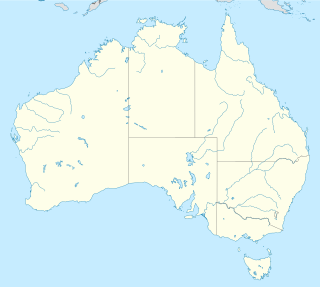 W
WAmelia Creek crater is an impact structure, the eroded remnant of a former impact crater, located in the Davenport Range, Northern Territory, Australia. It lies within a low range of Paleoproterozoic sedimentary and volcanic rocks, which are extensively folded and faulted, thus making an eroded impact crater difficult to recognize. It was only discovered by the identification of shatter cones near its centre. The central shatter cone locality is surrounded by a 20 by 12 km area of anomalous deformation, the asymmetry being possibly related to very oblique impact, but may be at least partly due to the pre-existing structural complexity of the rocks. This deformed zone gives the best estimate for the original size of the crater. Impact took place after folding of the Paleoproterozoic rocks but before deposition of Neoproterozoic and Cambrian rocks which overlie them, thus constraining the impact event to the interval between about 1660 and 600 Ma.
 W
WThe Beaverhead crater is an impact structure spanning the U.S. states of Idaho and Montana. Estimated at 60 kilometers (37 mi) in diameter, it is one of the largest impact craters on Earth.
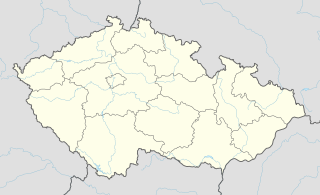 W
WThe Bohemian crater, also called Czech crater, is a working hypothesis that considers the Bohemian Massif as an approximately two billion year old potential impact crater of 260 kilometres (160 mi) diameter. This is contrary to the mainstream geological theory of plate tectonics, which explains the Bohemian Massif as the result of collision of independent continental units, occurring more than 300 million years ago.
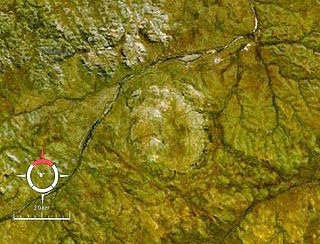 W
WFoelsche is a partly buried impact structure, the eroded remnant of a former impact crater. It is situated about 85 km southeast of Borroloola in the Northern Territory, Australia, and named after the nearby Foelsche River. Although little of it is exposed at the surface, and no crater shaped topography is evident, the circular nature of the feature is obvious on aeromagnetic images, a factor that led to its discovery.
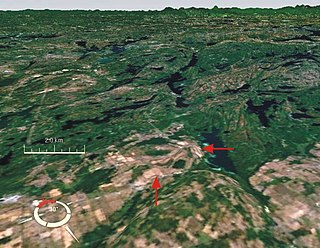 W
WThe Holleford Crater is a meteorite crater near the community of Holleford, part of South Frontenac, Ontario, Canada. It is 2.35 kilometres (1.5 mi) in diameter and the age is estimated to be 550 ± 100 million years. Although there is a surface depression over the area, the crater itself is not exposed at the surface.
 W
WIso-Naakkima is a lake in Southern Savonia, Finland, about 10 km south of the town of Pieksämäki. It is notable for having an eroded impact crater under the northwestern part of the lake. It is one of the oldest known, about 1200 million years old. Of the known craters older than a billion years old, it is also one of the smallest being only 3 km in diameter.
 W
WKelly West is a deeply eroded impact crater situated in the central Northern Territory, Australia. It was discovered during Government geological mapping and first reported in 1973, the evidence for impact coming principally from an abundance of shatter cones at the site.
 W
WKeurusselkä is a lake in Central Finland between the towns of Keuruu to the north and Mänttä to the south. It covers an area of 117.3 km2 (45.3 sq mi). Its average depth is 6.4 m (21 ft) with a maximum depth of 40 m (130 ft). The surface lies at 105.4 m (346 ft) above sea level. The lake is 27 km (17 mi) long and is a part of the Kokemäenjoki water system. Keurusselkä gained international publicity in 2004 when a pair of amateur geologists discovered an ancient impact crater on the western shore of the lake.
 W
WThe Lairg gravity low is a possible impact crater in Scotland about 40 kilometres in diameter, with a centre near the town of Lairg in the Scottish Highlands. Its identity as an impact crater is suspected due to the impact deposits present in the Stac Fada Member 50 km to the west. However, this has been disputed, with other studies suggesting that an impact in The Minch is more likely.
 W
WLawn Hill ‘crater’ refers to an impact structure, the eroded remnant of a former impact crater, situated approximately 220 km north-north-west of Mount Isa in northwestern Queensland, Australia. The site is marked by an 18 km diameter ring of dolomite hills. The origin of this circular feature was uncertain until the discovery of shatter cones and shocked quartz from uplifted rocks at the centre was reported in 1987.
 W
WLumparn is a large bay devoid of islands in the main island of Åland, Finland, bordered by Sund to the north, Lumparland to the east, Lemland to the south and Jomala to the west.
 W
WSääksjärvi is a lake in Kokemäki, Satakunta, western Finland, east from the town of Pori. The lake is notable because it overlies an impact crater.
 W
WSaarijärvi is an impact structure mostly covered by a small lake by the same name. It is located about 40 km south from the town of Taivalkoski, Northern Ostrobothnia, Finland.
 W
WShoemaker is an impact structure, the deeply eroded remnant of a former impact crater, situated in arid central Western Australia, about 100 km (62 mi) north-northeast of Wiluna. It is named in honour of planetary geologist Eugene Shoemaker.
 W
WSöderfjärden is a polder in Ostrobothnia, western Finland, 10 kilometres south of the town of Vaasa. The plain is in an impact crater which was made at least some 640 million years old. The crater's diameter is 6.6 km and its maximum depth is 300 metres. It is filled with Cambrian sandstones leaving only the outer rim visible. There is also a central uplift, which is buried. After rising from the sea due to post-glacial rebound, Söderfjärden was a wetland but was later drained with help of a pump station. It is currently cultivated and is clearly visible from air as a large circular field. This makes Söderfjärden unique among the other impact structures in Finland which are at least partially below sea level.
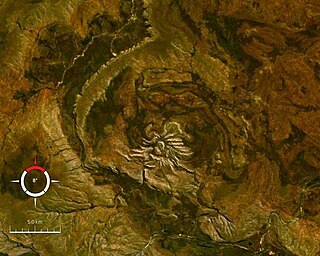 W
WSpider is an impact structure, the deeply eroded remnant of a former impact crater, situated in the Kimberley Region of northern Western Australia, 18 km east of the Mount Barnett Roadhouse on the Gibb River Road. Due to very rugged terrain the site is effectively inaccessible. The name is derived from the visually striking spider-like radiating ridges of quartzite prominently visible from the air or on satellite images.
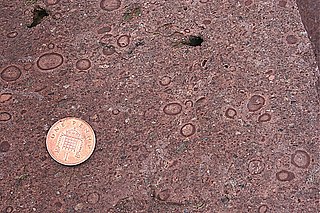 W
WThe Stac Fada Member is a distinctive layer towards the top of the Mesoproterozoic Bay of Stoer Formation, part of the Stoer Group in northwest Scotland. This rock unit is generally 10 to 15 metres thick and is made of sandstone that contains accretionary lapilli and many dark green glassy fragments of mafic composition.
 W
WStrangways is a large impact structure, the eroded remnant of a former impact crater, located in the Northern Territory of Australia about 65 kilometres (40 mi) east-south-east of the town of Mataranka. It was named after the nearby Strangways River. The location is remote and difficult to access. Its age has been determined as approximately 646 Ma.
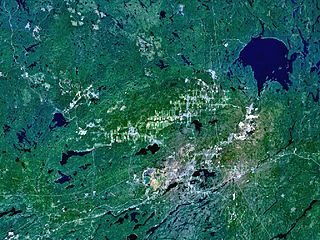 W
WThe Sudbury Basin, also known as Sudbury Structure or the Sudbury Nickel Irruptive, is a major geological structure in Ontario, Canada. It is the third-largest known impact crater or astrobleme on Earth, as well as one of the oldest. The crater formed 1.849 billion years ago in the Paleoproterozoic era.
 W
WSuvasvesi is a lake in Eastern Finland near the town of Kuopio. Suvasvesi consists of two circular open lakes, Kuukkarinselkä in north and Haapaselkä in south. The lakes are separated by a group of islands. The lake has 688 islands in total. The area of the lake is 234 square kilometres (90 sq mi) making it the 18th largest lake in Finland. Kuukkarinselkä is the third deepest lake in Finland measuring 89.0 metres (292.0 ft) in the deepest point.
 W
WThe Vredefort crater is the largest verified impact crater on Earth. More than 300 kilometres (190 mi) across when it was formed, what remains of it is in the present-day Free State province of South Africa. It is named after the town of Vredefort, which is near its centre. Although the crater itself has long since been eroded away, the remaining geological structures at its centre are known as the Vredefort Dome or Vredefort impact structure. The crater is calculated to be 2.023 billion years old, with impact being in the Paleoproterozoic Era. It is the third-oldest known crater on Earth.
 W
WThe Yarrabubba crater is an impact structure, the eroded remnant of a former impact crater, situated in the northern Yilgarn Craton near Yarrabubba Station between the towns of Sandstone and Meekatharra, Mid West Western Australia. With an age of 2.229 billion years, it is one of the oldest known impact structures on Earth.